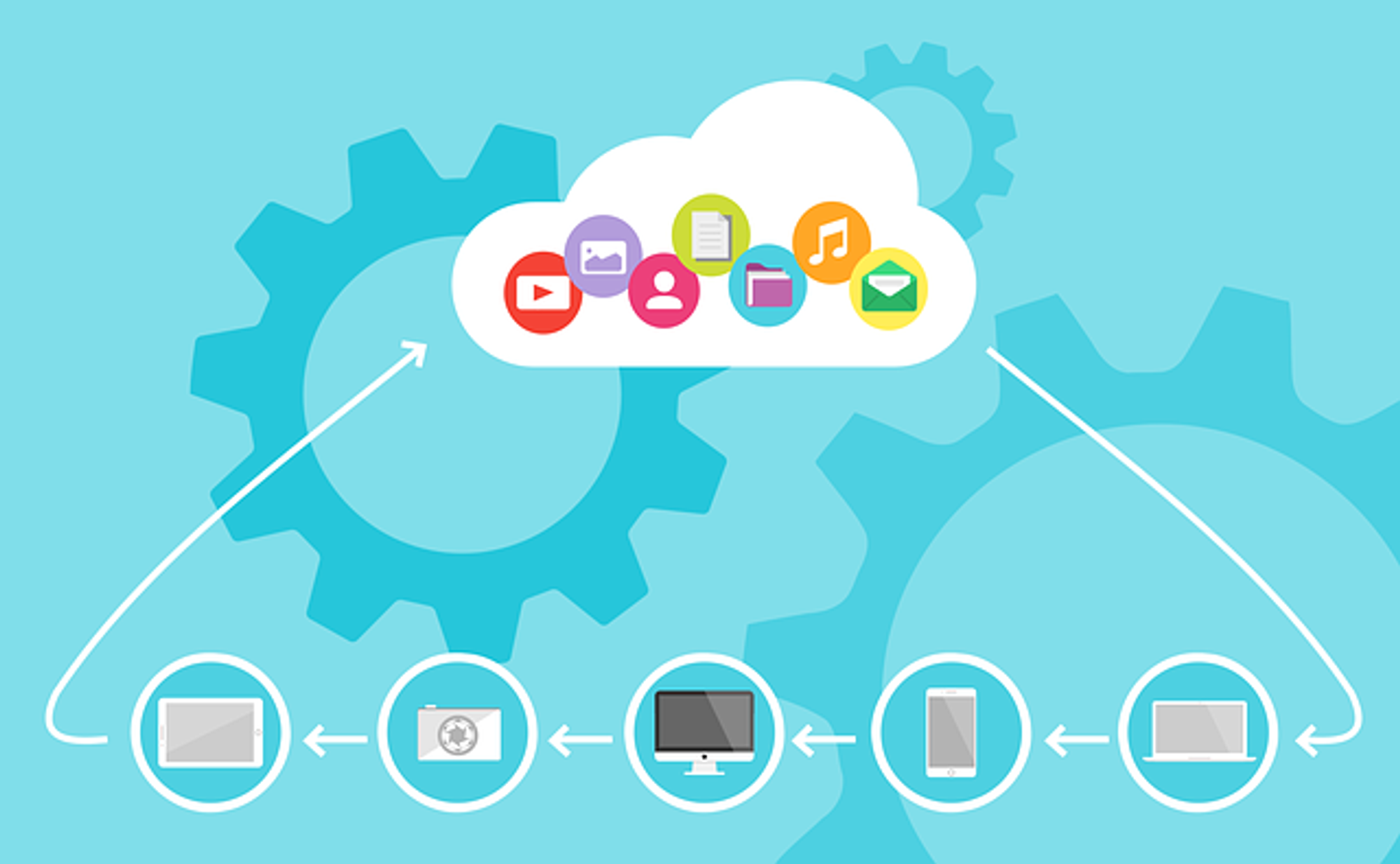Cloud Infrastructure 101: Fundamentals, Benefits, and Implementation Strategies for SMEs

Digital transformation is no longer a luxury but a necessity for businesses of all sizes. Small and medium-sized enterprises (SMEs), often operating with limited resources, are particularly pressured to stay innovative and competitive. A key technology supporting SMEs on this path is cloud infrastructure. By providing IT resources over the Internet, cloud infrastructure enables SMEs to scale their business processes, improve operational efficiency, and ultimately expand their market presence. This article aims to explain the fundamentals of cloud infrastructure, highlight its benefits for SMEs, and discuss practical implementation strategies. By exploring the possibilities of cloud infrastructure, we provide SMEs with a guide on how to leverage these powerful technologies to achieve their business goals and successfully position themselves in the digital landscape.
Fundamentals of Cloud Infrastructure

Definition and Explanation
Cloud infrastructure refers to the virtual infrastructure provided over the Internet or other network connections. It consists of hardware and software resources that form the foundation for cloud services, including servers, storage devices, network components, and virtualization software. Unlike traditional IT infrastructures, which are physically located within a company's premises, cloud infrastructure resides in the data centers of the cloud provider. This allows businesses flexible and scalable access to IT resources without the need to invest in physical hardware.
Components of Cloud Infrastructure
The cloud infrastructure consists of several key components:
Computing Capabilities: Virtual machines (VMs) with configurable processors and memory that run applications and services.
Storage Solutions: Services for data storage and management that enable secure and scalable data storage.
Network Capabilities: Virtual networks that enable secure communication between different parts of the cloud infrastructure and the user endpoints.
Types of Cloud Infrastructures
There are three main types of cloud infrastructures, differing in terms of management, scalability, and security:

Scaling Business Processes
Cloud infrastructure enables SMEs unprecedented flexibility in scaling their IT resources to meet changing business needs. Instead of investing in expensive hardware, companies can simply source the needed resources over the Internet and adjust as needed. This means that SMEs can quickly respond to market trends, increase their operational capacity with rising demand, or reduce it with lower demand without compromising efficiency or performance.
Cost Efficiency and Flexibility
Utilizing cloud infrastructure can lead to significant savings on IT costs for SMEs. Since costs are based on a pay-per-use model, companies only pay for the resources they actually use. This eliminates the need for large initial investments in hardware and the ongoing costs for maintenance and updates. Moreover, the cloud offers unprecedented flexibility, enabling SMEs to quickly and efficiently respond to business requirements.
Improved Accessibility
Cloud infrastructure offers the advantage of location-independent accessibility. Employees can access corporate applications and data from anywhere as long as an internet connection is available. This not only promotes workforce mobility and flexibility but also supports new working models such as home office or global teams.
The Role of Cloud in the Digital Transformation of SMEs

Digital transformation is essential for SMEs to succeed in today's competitive economy. The cloud plays a central role by enabling businesses to become more agile, implement innovations faster, and interact more effectively with customers and partners.
Acceleration of Innovation
Cloud services provide SMEs access to advanced technologies such as Artificial Intelligence (AI), Big Data analytics, and the Internet of Things (IoT), which were previously reserved for larger companies. These technologies can be used to develop new products, improve customer service, and enhance operational efficiency.
Promoting Agility and Scalability
The flexibility of the cloud supports SMEs in quickly responding to market changes. The ability to scale resources up or down as needed means that companies can grow without having to invest in expensive infrastructure. This allows for more efficient use of resources and better adaptation to customer needs.
Enhancing Collaboration
Cloud-based tools promote collaboration within teams and with external partners by enabling access to shared documents and applications from anywhere and at any time. This not only improves efficiency but also supports a more flexible work culture.
Challenges in Implementing a Cloud Infrastructure
Migrating to a cloud infrastructure comes with numerous benefits for SMEs but also presents some challenges. Common concerns include security risks, privacy issues, and the complexity of the migration process.
Security and Privacy
Security concerns are often at the forefront when companies consider a cloud migration. The worry that sensitive data stored outside their own network could potentially be affected by cyber attacks is not unfounded. Additionally, complying with data protection laws and ensuring data integrity pose further challenges.
Migration Complexity
Migrating existing systems and applications to the cloud can be complex. The need to safely transfer existing data while ensuring operational continuity requires careful planning and expertise. Many SMEs may not have the internal resources or expertise to ensure a smooth migration.
Step-by-Step Guide to Implementation

Needs Analysis and Goal Setting
The first step in implementing a cloud infrastructure is to understand the specific needs of your business and set clear goals for the migration. This involves assessing the existing IT infrastructure, identifying business processes that could benefit from the cloud, and setting priorities for migration.
Selecting the Appropriate Cloud Model and Provider
Depending on the specific requirements of your business, you should decide whether a public, private, or hybrid cloud infrastructure is best suited. Selecting a trustworthy cloud provider that offers the desired services reliably and securely is also crucial.
Planning and Executing the Migration
Detailed planning of the migration is crucial for success. This includes creating a schedule, selecting the applications and data to be migrated, and determining the order of migration steps. During the migration process, it is important to ensure the security of the data and minimize downtime.
Employee Training and Change Management
Successfully introducing a cloud infrastructure requires not only technological adjustments but also a change in mindset among employees. Training and continuous support help prepare the workforce for the new systems and work methods. Effective change management is crucial to overcome resistance and fully leverage the benefits of the cloud.
Security Strategies in the Cloud for SMEs
The importance of security in the cloud cannot be overstated, especially for SMEs that need to protect sensitive business and customer data. A robust security strategy is crucial to take advantage of the benefits of cloud infrastructure without compromising data security.
Fundamentals of Cloud Security
The basics of cloud security include end-to-end encryption, regular security audits, and the implementation of Multi-Factor Authentication (MFA) for accessing cloud services. These measures help protect data both during transmission and storage and prevent unauthorized access.
Adapting Security Measures
SMEs need to adapt their security measures to the specific risks and requirements of their business operations. This includes assessing data classification to determine which data can be migrated to the cloud and which may need to be kept internally due to strict compliance requirements.
Collaboration with Cloud Providers
Choosing a cloud provider like CloudCops, which offers comprehensive security features and compliance certifications, is crucial. SMEs should work with their providers to understand security protocols and ensure that their cloud environments are properly configured to avoid potential security gaps.
Best Practices for Managing and Optimizing Cloud Infrastructure
Strategies for Ongoing Monitoring and Cost Management
Continuous monitoring of the cloud infrastructure is crucial to detect and address performance issues early. Tools for cloud management provide insights into usage and performance that are essential for optimizing resource use and managing costs.
Tips for Complying with Compliance Standards
Complying with data protection and security standards is an ongoing process. SMEs should regularly review the compliance of their cloud infrastructure and ensure that all applications and data comply with applicable regulations.
Recommendations for Performance Optimization and Scaling
The ability to dynamically adjust resources is one of the greatest benefits of the cloud. Companies should continuously evaluate the performance of their applications and optimize the scaling of resources according to requirements. Efficient use and regular adjustments help control costs and maximize performance.
The Future of Cloud Infrastructure for SMEs
The future of cloud infrastructure looks promising, particularly for SMEs eager to enhance their flexibility, reduce costs, and increase the efficiency of their operations. With the continuous development of cloud technologies and increasing acceptance in the business world, cloud infrastructure is expected to play an even more important role in the IT strategy of SMEs.
Innovations in cloud technology, such as Edge Computing, Artificial Intelligence (AI), and Machine Learning (ML), open new opportunities for data processing and analysis that can help SMEs improve their services and enter new markets. The ability to quickly respond to market changes and adjust IT resources as needed will provide SMEs with a significant competitive advantage.
For SMEs, it is crucial to keep an eye on developments in the field of cloud infrastructure and be ready to adapt new technologies to continuously innovate and improve their business models. Investing in a robust and flexible cloud infrastructure is an essential step to secure the future viability and growth of the company.
Conclusion
Adopting a cloud infrastructure offers SMEs a wealth of benefits, including improved flexibility, cost efficiency, and accessibility. By overcoming the challenges associated with implementation, SMEs can optimize their operations and strengthen their competitiveness in an increasingly digitalized world. Applying best practices for managing and optimizing the cloud infrastructure ensures that SMEs can fully leverage the benefits of the cloud.
Looking ahead, it is clear that cloud infrastructure will play a central role in the business strategy of SMEs. Being ready to adapt to new technologies and implement innovative solutions will be crucial to succeed in a rapidly changing market environment. For SMEs investing in their digital transformation, cloud infrastructure is not just a way to keep pace with larger competitors, but also an opportunity to differentiate themselves through agile and cost-efficient action.
Frequently Asked Questions
What is a Cloud?
The cloud refers to servers that are accessible over the Internet, as well as the software and databases that run on those servers. Instead of storing information on one's own computer or a local server, it can be stored in the cloud, which is accessible from anywhere as long as an Internet connection exists. This enables businesses and individuals to access resources in a flexible, scalable, and often more cost-efficient manner than with physical hardware.
What is Cloud Computing?
Cloud computing is the process of providing IT resources such as computing power, storage space, and applications over the Internet, often on a subscription- or pay-per-use model. It allows users to access a variety of resources and services without having to locally install or host them on their own computers or servers. Cloud computing includes various service models, including Infrastructure-as-a-Service (IaaS), Platform-as-a-Service (PaaS), and Software-as-a-Service (SaaS), offering different levels of control, flexibility, and management.
What is Cloud Storage?
Cloud storage is a model of data storage in which digital data is stored in logical pools. The physical storage spans multiple servers (and often locations), which are managed by a hosting company. Users and organizations rent or purchase access to this storage space over the Internet. Cloud storage offers the advantage of data being accessible from any location over the Internet, facilitating easy sharing and collaboration among users. It is a flexible and scalable solution that allows storage space to be expanded or reduced as needed, without the need to invest in physical hardware.

We light the path through the tech maze and provide production-grade solutions. Embark on a journey that's not just seamless, but revolutionary. Navigate with us; lead with clarity.
Connect with an Expert
Salih Kayiplar | Founder & CEO


Containerization & Microservices
Containerization & Orchestration ConsultingApplication Modernization ConsultingKubernetes ConsultingDocker ConsultingCI/CD & GitOps
CI/CD ConsultingGitOps ConsultingArgoCD ConsultingFluxCD ConsultingJenkins ConsultingFlagger ConsultingSecurity & Compliance
DevSecOps ConsultingHashiCorp Vault ConsultingSonarQube ConsultingSnyk ConsultingKyverno ConsultingOpen Policy Agent ConsultingNetworking
Cloud Native Networking ConsultingAccess & Identity Management
HashiCorp Boundary ConsultingKeycloak ConsultingHashiCorp Vault ConsultingContainer Registry & Dependencies
Registry & Package Management ConsultingSoftware Dependency ConsultingHarbor ConsultingDragonFly ConsultingJFrog ConsultingRenovate ConsultingTesting & Chaos Engineering
Testing & Chaos Engineering ConsultingChaos Mesh ConsultingTerratest ConsultingLitmus ConsultingObservability & Analysis
Prometheus ConsultingThanos ConsultingOpen Telemetry ConsultingJaeger ConsultingStreaming & Messaging
NATS ConsultingCloud Infrastructure Deployment
Cloud Infrastructure ConsultingCloud Infrastructure Deployment ConsultingTerraform ConsultingPulumi ConsultingCrossplane ConsultingTerragrunt ConsultingCloud Migration
Cloud Migration ConsultingDisaster Recovery
Disaster Recovery ConsultingCloud Maintenance
Cloud Maintenance ConsultingContainerization & Microservices
Containerization & Orchestration ConsultingApplication Modernization ConsultingKubernetes ConsultingDocker ConsultingCI/CD & GitOps
CI/CD ConsultingGitOps ConsultingArgoCD ConsultingFluxCD ConsultingJenkins ConsultingFlagger ConsultingObservability
Observability ConsultingGrafana ConsultingGrafana Loki ConsultingGrafana Tempo ConsultingGrafana Mimir ConsultingOpenTelemetry ConsultingJaeger ConsultingThanos ConsultingPrometheus ConsultingSecurity & Compliance
DevSecOps ConsultingHashiCorp Vault ConsultingSonarQube ConsultingSnyk ConsultingKyverno ConsultingOpen Policy Agent ConsultingNetworking
Cloud Native Networking ConsultingAccess & Identity Management
HashiCorp Boundary ConsultingKeycloak ConsultingHashiCorp Vault ConsultingContainer Registry & Dependencies
Registry & Package Management ConsultingSoftware Dependency ConsultingHarbor ConsultingDragonFly ConsultingJFrog ConsultingRenovate ConsultingTesting & Chaos Engineering
Testing & Chaos Engineering ConsultingChaos Mesh ConsultingTerratest ConsultingLitmus ConsultingService Mesh & Loadbalancer
Load Balancer ConsultingService Mesh ConsultingIngress Controller ConsultingLinkerD ConsultingIstio ConsultingHashicorp Consul ConsultingKong ConsultingObservability & Analysis
Prometheus ConsultingThanos ConsultingOpen Telemetry ConsultingJaeger ConsultingStreaming & Messaging
NATS ConsultingCloud Infrastructure Deployment
Cloud Infrastructure ConsultingCloud Infrastructure Deployment ConsultingTerraform ConsultingPulumi ConsultingCrossplane ConsultingTerragrunt ConsultingCloud Migration
Cloud Migration ConsultingDisaster Recovery
Disaster Recovery ConsultingCloud Maintenance
Cloud Maintenance ConsultingContainerization & Microservices
Containerization & Orchestration ConsultingApplication Modernization ConsultingKubernetes ConsultingDocker ConsultingCI/CD & GitOps
CI/CD ConsultingGitOps ConsultingArgoCD ConsultingFluxCD ConsultingJenkins ConsultingFlagger ConsultingObservability
Observability ConsultingGrafana ConsultingGrafana Loki ConsultingGrafana Tempo ConsultingGrafana Mimir ConsultingOpenTelemetry ConsultingJaeger ConsultingThanos ConsultingPrometheus ConsultingSecurity & Compliance
DevSecOps ConsultingHashiCorp Vault ConsultingSonarQube ConsultingSnyk ConsultingKyverno ConsultingOpen Policy Agent ConsultingNetworking
Cloud Native Networking ConsultingAccess & Identity Management
HashiCorp Boundary ConsultingKeycloak ConsultingHashiCorp Vault ConsultingContainer Registry & Dependencies
Registry & Package Management ConsultingSoftware Dependency ConsultingHarbor ConsultingDragonFly ConsultingJFrog ConsultingRenovate ConsultingTesting & Chaos Engineering
Testing & Chaos Engineering ConsultingChaos Mesh ConsultingTerratest ConsultingLitmus ConsultingService Mesh & Loadbalancer
Load Balancer ConsultingService Mesh ConsultingIngress Controller ConsultingLinkerD ConsultingIstio ConsultingHashicorp Consul ConsultingKong ConsultingObservability & Analysis
Prometheus ConsultingThanos ConsultingOpen Telemetry ConsultingJaeger ConsultingStreaming & Messaging
NATS ConsultingCloud Infrastructure Deployment
Cloud Infrastructure ConsultingCloud Infrastructure Deployment ConsultingTerraform ConsultingPulumi ConsultingCrossplane ConsultingTerragrunt ConsultingCloud Migration
Cloud Migration ConsultingDisaster Recovery
Disaster Recovery ConsultingCloud Maintenance
Cloud Maintenance Consulting© 2025 CloudCops - Pioneers Of Tomorrow